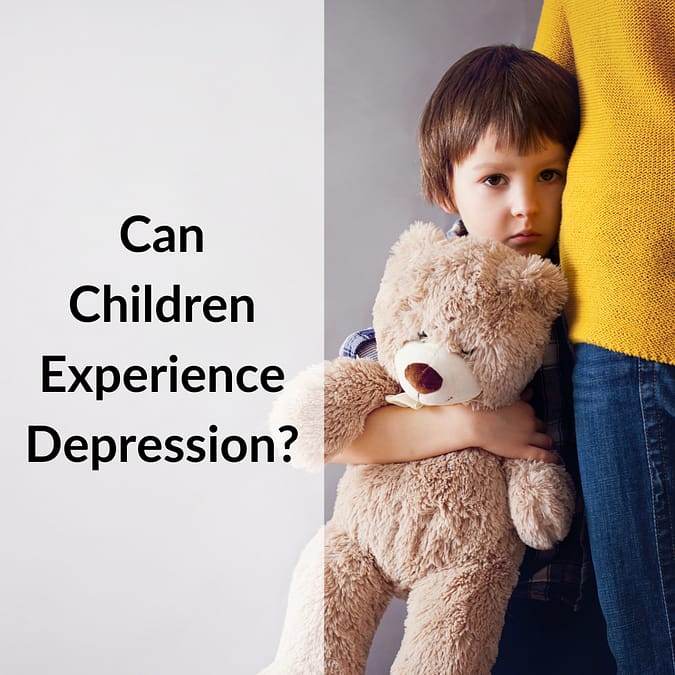 |
Written by Shirley Sanguino
Often, we find ourselves wondering, how can a child be depressed? |
What could possibly be contributing to their depression at such a young age? As someone who experienced childhood depression, I know it can be pretty difficult to feel all alone in the battle against it. I remember being told I could not have depression because I was just eleven years old, yet I felt as though I was at the bottom of a well with no way out and no one to comprehend.
Can children experience depression?
Maughan, Collishaw, and Stringaris, three researchers associated with adolescent and child psychiatry at the London Institute of Psychiatry and the Cardiff University School of Medicine, state that children are often considered too emotionally immature to experience depression, while adolescent depression is associated with mood swings typical of teenage hood (2013). However, depression is diagnosed via criteria assessed through the Diagnostic and Statistical Manual of Mental Disorders, which is published by the American Psychiatric Association. These criteria include symptoms such as low self-esteem, guilt, increased or decreased appetite or sleep, and suicidal thoughts. These symptoms are assessed, considered, and applied regardless of age (Maughan, Collishaw, & Stringaris, 2013).
Studies show that depression can occur in children.
One study finds that depression in youth is chronic and recurrent, with about 50-70% of the sample observed demonstrating another depressive episode within five years (Dunn & Goodyer, 2006, as cited in Maughan, Collishaw, & Stringaris, 2013). Furthermore, a study in various countries demonstrated that there was a prevalence of depression among the children population. Findings showed depression prevalence of 4% in Spain, 6% in Finland, 8% in Greece, 10% in Australia, and 25% in Colombia (Bernaras, Jaureguizar, & Garaigordobil, 2019).
Several factors can contribute to the development of depression in children. For example, across different developmental periods including adults, teenagers, and children – a family history of mental health disorders and external stressful life events can accentuate the possibility of developing depression in individuals of all ages (Maughan, Collishaw, & Stringaris, 2013). Other factors exist too. A systematic review of existing literature revealed that risk factors for children include interparental conflict, child maltreatment, parental drug use, and family violence (Lima et al., 2013).
What causes depression in children?
One major cause of depression in children is adverse childhood experiences (ACEs). The Centers for Disease Control and Prevention (CDC) define ACEs as “potentially traumatic events that occur in childhood” (CDC, 2021). These traumatic experiences include childhood violence, abuse, or living in a home where mental illness or substance abuse is present. These environmental conditions can lead to not only mental health problems, but also substance use and physical health problems as well (CDC, 2021).
Childhood Domestic Violence (CDV) is one of the most prevalent ACEs, impacting up to one in four children (McCrory et. al., 2011). CDV occurs when a child grows up living in a home with domestic violence. Even when children are not the direct target of the violence, they can suffer the same effects caused by child abuse and other ACEs. For example, researchers find that children who grow up living with CDV are more likely to experience:
- Depression and sadness
- Anxiety
- Limited social and cognitive skills
- Reactive aggression
- Withdrawn behavior
- Maladaptation
- And other negative effects
Understanding that CDV and other ACEs are major causes of depression in children can help us offer better support to nurture resiliency in those impacted.
How to help children with depression
Although depression impacts many children, experts have found that adults can help these children grow their resiliency against adversity. Resiliency is one’s ability to cope in the face of adverse circumstances.
The National Child Traumatic Stress Network reports that some of the key factors in building a child’s resiliency include:
- Receiving support from caring members of their communities
- Feeling a sense of safety in their communities
- Feeling a positive sense of self-worth
We created our 45-minute online Change A Life program to give you the tools you need to help strengthen a child’s resiliency in the midst of CDV and other ACEs. This program helps you understand what it’s like to grow up with CDV and how to step in to provide the support, safety, and feelings of self-worth a child needs.
References
Bernaras, E., Jaureguizar, J., & Garaigordobil, M. (2019). Child and Adolescent Depression: A Review of Theories, Evaluation Instruments, Prevention Programs, and Treatments. Frontiers in Psychology. https://doi.org/10.3389/fpsyg.2019.00543
Centers for Disease Control and Prevention. (2021). Adverse Childhood Experiences (ACEs). https://www.cdc.gov/vitalsigns/aces/index.html#:~:text=ACEs%20can%20include%20violence%2C%20abuse,and%20substance%20misuse%20in%20adulthood.
Lima, N. N., do Nascimento, V. B., de Carvalho, S. M., de Abreu, L. C., Neto, M. L., Brasil, A. Q., Junior, F. T., de Oliveira, G. F., & Reis, A. O. (2013). Childhood depression: a systematic review. Neuropsychiatric disease and treatment, 9, 1417–1425. https://doi.org/10.2147/NDT.S42402
Maughan, B., Collishaw, S., & Stringaris, A. (2013). Depression in childhood and adolescence. Journal of the Canadian Academy of Child and Adolescent Psychiatry = Journal de l’Academie canadienne de psychiatrie de l’enfant et de l’adolescent, 22(1), 35–40.
Eamon J. McCrory, Stéphane A. De Brito, Catherine L. Sebastian, Andrea Mechelli, Geoffrey Bird, Phillip A. Kelly, Essi Viding, Heightened neural reactivity to threat in child victims of family violence, Current Biology, Volume 21, Issue 23, 2011, Pages R947-R948, ISSN 0960-9822, https://doi.org/10.1016/j.cub.2011.10.015.

